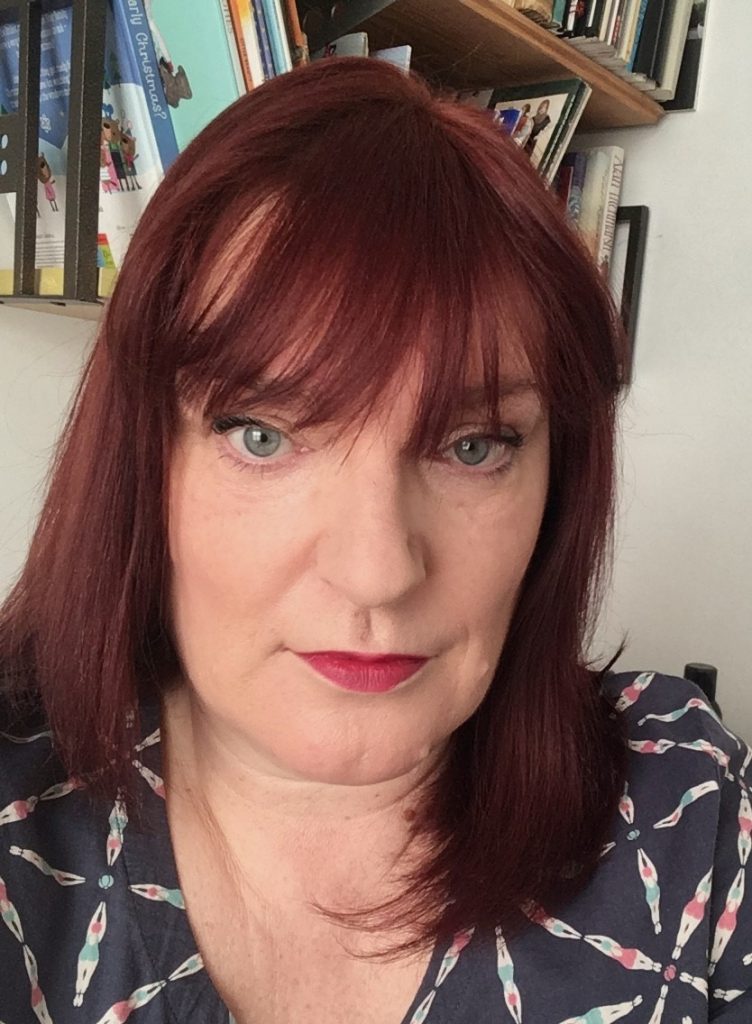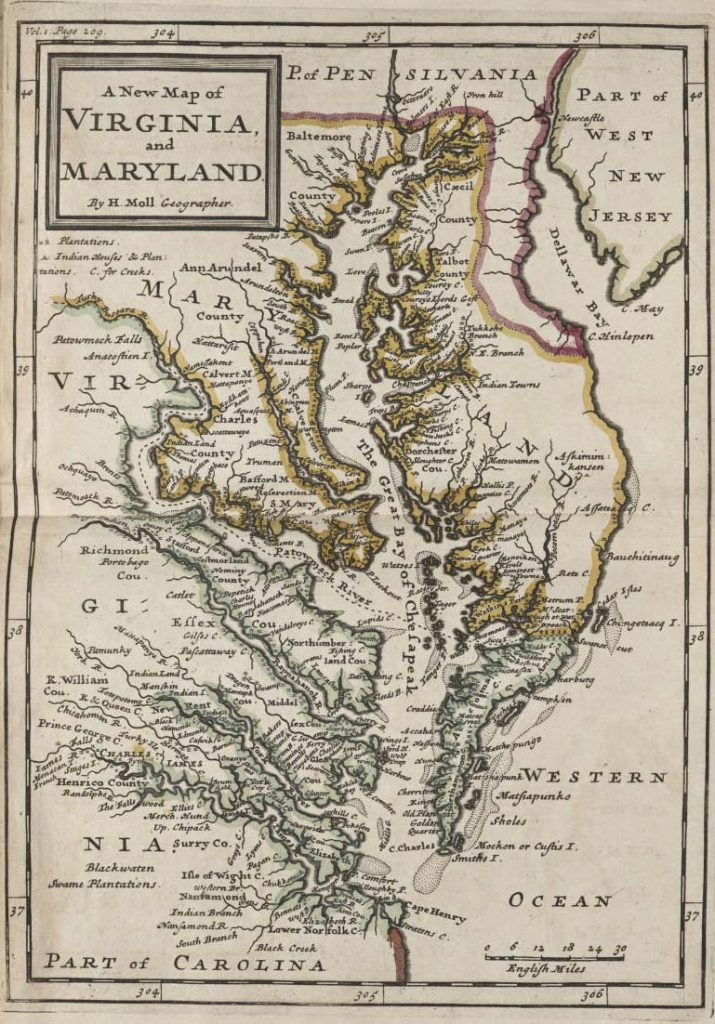
Julie Miller, a masters student from University of Essex, has taken up a research placement at the Essex Record Office, conducting an exploration into the story of John Farmer and his adventures, particularly in pre-revolutionary America, and has been jointly funded by the Friends of Historic Essex and University of Essex. Julie will be publishing a series of updates from the 12-week project.
In May 1713 John Farmer was in Maryland attending the Western Shore Yearly Meeting of Friends..
“Afterwards I staid som time in Maryland & wrought with my hands at wool combing… While I was here I received fresh orders from Christ to have meetings amongst Indians in order to their convershon to Christ & to go to Virginia & Pensilvaina & ye west Indies in his service.” [i]
Farmer then set out to meet the local Native American communities properly and having had a good meeting amongst friends he commented that he had given testimony amongst “Indians and some Chief Indians and they were glad of it and marvelled that no such thing had been before offered to them”[ii]
He went on to say an interpreter spoke Farmer’s testimony and prayer at a meeting “to which the Indians several times gave their approbation in their way by giving a sound” [iii]. We can only wonder what form that sound took.
In August 1713 Farmer was at the Mulberry Grove plantation in Maryland at an evening meeting at George Truit’s house, where they were joined by a Native American priest, an interpreter and a number of other Native Americans. Later in the evening they were joined by the “Indian King” who “spake very good English” and invited Farmer to visit their settlement. In September 1713 he had a memorable visit lodging with the “Shuana Indians” at Conestoga on the Susquehanna River, staying in what he described as an “Indian King’s Palace”, where he slept on “bare [bear] skins on scaffolds before a good fire, for it was a cold frosty night”[iv]

In September 1713 Farmer was at the Philadelphia yearly meeting where he told the assembled Friends that he wanted to spend more time with the Native Americans and he received a Certificate of Unity from the Philadelphia Friends and received help and translators to hold meetings in Pennsylvania and share his testimony of the story of Jesus.
Farmer spent six months travelling and preaching with the Native Americans. On 9th October 1713 there was a
“large meeting amongst Indians nere Brandy Wine River in Chester County in Pennsylvania. Where a honest Swede did well Interpret for mee. It was a large & satisfactory meeting to the Indians & to our friends & to mee at the End. Whereof the Indians said that they were pleased with what they heard in the meeting.”[v]
John Farmer was aware that the Native Americans had a belief in God and the Devil and a concept of heaven and hell:
“The Indians have a beliuef of God. & that hee hath a son. & that hee is Good. & that the good people when they dy goe to him: & bee alwais in pleasure. But after ye bad people dy they are alwaise in affliction. The Indians also say yt there is a Divel who is bad & ye Author of badness & they are afraid of him.” [vi]

But he reported that much trouble was being caused in the Native American communities by rum. One man told him about a dream story he had heard:
“The Indian in a trance had one com to him & bid him goe back & live well & then when hee dyed hee should be amongst thouse Indians who were in pleasure. Hee was asked why then did hee live badly by drinking to much Rum. Hee answered that before white people cam amongst them they were good & kind one to another but now they are becom bad & hard to one a nother that they may have wherewithal to buy Rum.”[vii]
At a meeting on 18th October 1713 at Conestoga, Farmer met up with Philadelphia Friends Hugh Lowden and Andrew Job. At a meeting they convinced the Native Americans there to send one of their sons to Philadelphia to be taught to read and write in order that he could translate and ensure that “the love that hath hitherto been between you and us continuew between our Children and your Children after us, which the Indians assented to” [viii].
Farmer was obviously interested in the Native American’s spiritual understanding of the world around them and he reported the story of one hunter’s unearthly encounter:
“Ye sd Indian had bad luck in hunting. At wch hee was troubled & then see a man in white Raiment stand before him. Who asked him why hee was troubled & further said dost thou not know yt there is a great God who ruleth althings & giveth good luck to whome hee please? Do thou live well & teach ye Indians to do so too & then hee will give thee good things. The Indian asked him his name where upon hee gave himselfe ye name of a bird (wch the Indians say is so holy yt hee never tocheth ye ground) & then vanished out of the Indian’s sight.” [ix]
Within the journal I have not found references to Native American communities resisting or objecting to the conversations with John Farmer in particular and the Quaker’s in general. He was not the first Quaker visitor, Thomas Chalkley had been at Conestoga in 1706 and had a good relationship with a female tribal leader who he called “an old Empress” who had dreamed that a friend of William Penn’s would be visiting and had advised her people to allow them to preach. Thus the foundations had already been laid for Native Americans to be receptive to the Quaker message. At least initially.[x]
By November 1713 John Farmer was back in Philadelphia where he tallied up the miles he had travelled since arriving in America and found it to be 5607 miles. It was then time to start planning for the next part of his journey, to the Caribbean Islands.
And so we leave our intrepid Essex Friend in Philadelphia, waiting for
the ship to take him all the way to Barbados.
[i] John Farmer Journal, Essex Record Office A13685, Box 51, p.50
[ii] John Farmer Journal, Essex Record Office A13685, Box 51, p.50
[iii] John Farmer Journal, Essex Record Office A13685, Box 51, p.50
[iv] John Farmer Journal, Essex Record Office A13685, Box 51, p.50
[v] John Farmer Journal, Essex Record Office A13685, Box 51, p.55
[vi] John Farmer Journal, Essex Record Office A13685, Box 51, p.56
[vii] John Farmer Journal, Essex Record Office A13685, Box 51, p.56
[viii] John Farmer Journal, Essex Record Office A13685, Box 51, p.55
[ix] John Farmer Journal, Essex Record Office A13685, Box 51, p.56
[x] John Farmer Journal, Essex Record Office A13685, Box 51, p.55
For further information see Thomas Chalkey’s Journal for 1706 chap 45: http://www.archive.org/stream/journalofthomasch00chal/journalofthomasch00chal_djvu.txt
